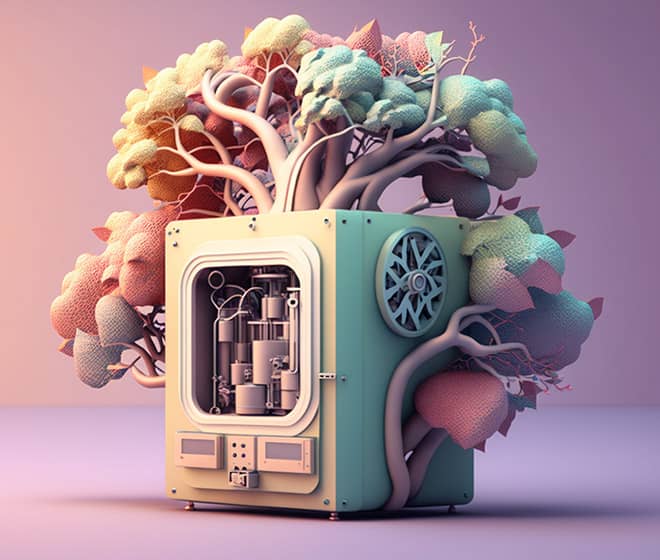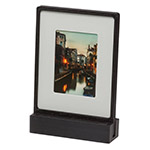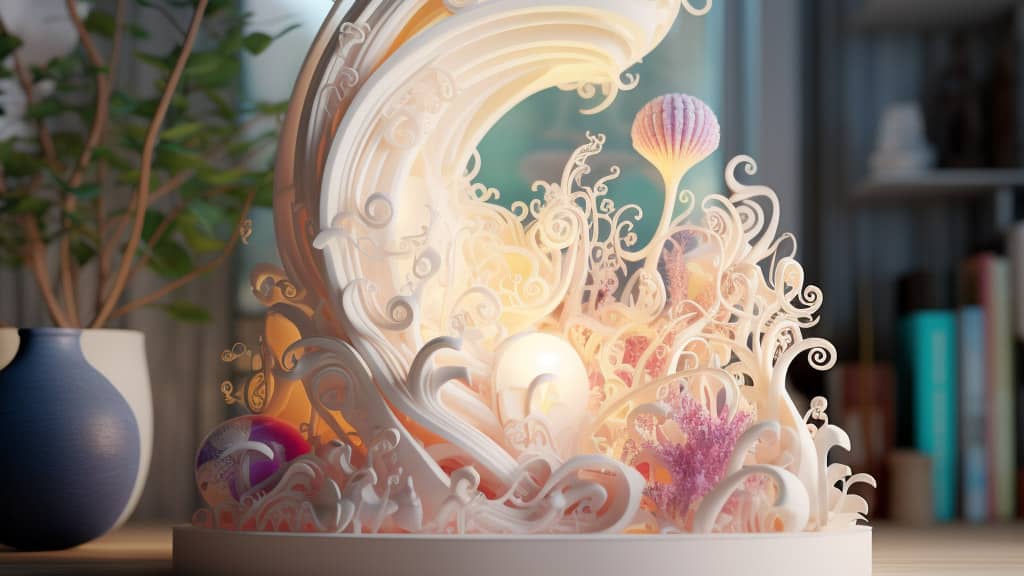Introduction
In today’s world, environmental consciousness is at the forefront of many discussions. As a result, eco-friendly art has emerged as a response to growing concerns about sustainability and the environment. This article will explore the role of 3D printing in sustainable design and green art techniques, showcasing the creative possibilities and environmental benefits that this technology offers.
The Emergence of Eco-friendly Art in the Modern World
As environmental awareness has grown, so too has the interest in eco-friendly art. This type of art focuses on reducing the environmental impact of the creative process, often by using sustainable materials, minimizing waste, and promoting environmental conservation. Eco-friendly art can take many forms, from upcycled sculptures to biodegradable installations, but one of the most exciting developments in this field has been the integration of 3D printing technology.
3D printing, also known as additive manufacturing, is a process that creates three-dimensional objects by layering material in a precise, digital pattern. This innovative technology has found applications in various industries, from aerospace to fashion. Now, it’s making waves in the art world, transforming how artists approach sustainable design and green art techniques.
Sustainable Design and the Role of 3D Printing Technology
3D printing has become an essential tool for artists and designers looking to create eco-friendly art, and for several reasons:
- Material Efficiency: Traditional manufacturing processes, such as carving or casting, often generate waste by removing material from a solid block or creating excess material during the production process. In contrast, 3D printing only uses the material needed for the object, minimizing waste and making it more sustainable.
- Recycling and Reusability: Many 3D printers can use recycled materials, such as plastic or metal, to create new objects. This reduces the demand for new materials and promotes a circular economy. Additionally, if a 3D printed object is no longer needed, it can often be recycled and used as raw material for future projects.
- Energy Conservation: 3D printing is generally more energy-efficient than traditional manufacturing methods, as it often requires less material processing and transportation. This reduces the carbon footprint of the art piece, making it more eco-friendly.

Creative Applications of 3D Printing in Green Art Techniques
As artists and designers explore the potential of 3D printing technology, they have discovered a multitude of creative applications:
- Biodegradable Art: Some 3D printers can use biodegradable materials, such as PLA (polylactic acid), derived from renewable resources like cornstarch. This allows artists to create temporary installations that can safely decompose, reducing their environmental impact.
- Recycled Material Art: Artists are using 3D printing to upcycle waste materials, turning them into beautiful sculptures and functional objects. For example, some artists use discarded plastic bottles as raw material for their 3D printed creations, highlighting the importance of recycling and waste reduction.
- Eco-conscious Design: 3D printing technology enables artists to create complex, intricate designs that would be difficult or impossible to achieve with traditional methods. This allows them to push the boundaries of sustainable design, creating visually stunning pieces that are also eco-friendly.
- Collaborative Art: The digital nature of 3D printing allows artists and designers to collaborate across distances, sharing ideas and techniques to further the development of eco-friendly art. This global exchange of knowledge encourages innovation and helps spread awareness of environmental issues.
The Future of Eco-friendly Art: How 3D Printing Can Lead the Way
As 3D printing technology continues to advance, its potential applications in the world of eco-friendly art and sustainable design will only grow. Some future developments may include:
- New Materials: As research into sustainable materials progresses, we can expect to see a wider range of eco-friendly options for 3D printing. These materials could include bioplastics, bio-based composites, and even materials made from algae or fungi, offering artists more choices for creating environmentally responsible art.
- Improved Energy Efficiency: Advances in 3D printing technology may lead to even greater energy efficiency, further reducing the environmental impact of the art production process. This could involve the development of more efficient printing processes, better energy management systems, and the integration of renewable energy sources.
- Distributed Manufacturing: As 3D printing becomes more accessible, it’s likely that more artists and designers will have access to this technology in their local communities. This distributed manufacturing model could reduce the need for long-distance transportation of art pieces and raw materials, thus lowering the carbon footprint associated with the art world.
- Education and Awareness: As more artists and designers adopt 3D printing for eco-friendly art, this technology will likely become a more prominent tool for raising awareness about environmental issues. Through workshops, exhibitions, and online platforms, artists can share their knowledge and inspire others to embrace sustainable design practices.
Conclusion
3D printing technology has the potential to revolutionize eco-friendly art and sustainable design. With its ability to reduce waste, conserve resources, and inspire creativity, 3D printing is paving the way for a greener future in the world of art and design. As more artists and designers embrace this technology, we can expect to see continued innovation in the realm of green art techniques. By harnessing the power of 3D printing, artists have the opportunity to create visually stunning and meaningful works that also contribute to environmental conservation and a more sustainable future.
Unveiling the Beauty of Innovative Materials for 3D Printed Art
Sculpting the Future: How 3D Printing is Transforming the World of Sculpture



